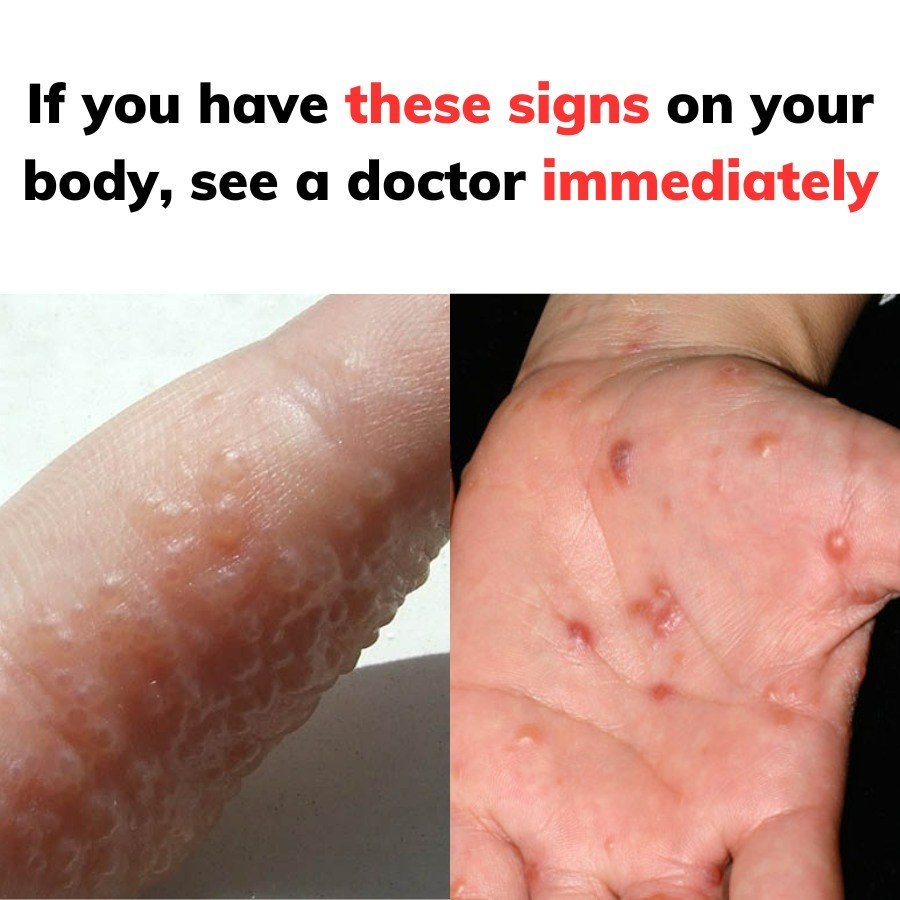Our bodies have unique ways of signaling when something might be wrong, and it’s crucial to pay attention to the signs. One condition that often goes unnoticed until it worsens is dyshidrotic eczema. Though it might sound unfamiliar to many, this chronic skin condition can cause significant discomfort if left untreated. If you experience any of the following symptoms, it’s important to seek medical advice immediately to prevent further complications.

Understanding Dyshidrotic Eczema
Dyshidrotic eczema, also known as pompholyx, is a specific form of eczema that affects the skin. It primarily presents itself as deep blisters on the hands and soles of the feet. These blisters are not just surface-level irritations; they can cause intense itching and discomfort, making everyday activities like walking, writing, or holding objects difficult. While the exact cause of dyshidrotic eczema isn’t fully understood, it’s thought to be triggered by factors such as stress, allergies, and excessive sweating.
The condition is categorized as a type of chronic dermatitis, meaning it can persist over long periods, often in cycles of flare-ups and remissions. During a flare-up, the blisters may become more severe, potentially even painful. The itching can be so intense that it may interfere with sleep or concentration. If left untreated, dyshidrotic eczema can lead to skin infections due to constant scratching and irritation.
Recognizing the Signs
If you notice any of these signs, don’t hesitate to reach out to a healthcare professional:
- Small, Fluid-Filled Blisters: The hallmark of dyshidrotic eczema is the appearance of tiny, fluid-filled blisters on the sides of the fingers, palms, and soles of the feet. These blisters are usually deep under the skin and can range in size from very small to quite large.
- Intense Itching: One of the most common and distressing symptoms of dyshidrotic eczema is itching. The itching is often so severe that it can disrupt daily activities and sleep.
- Redness and Inflammation: In addition to blisters, the affected areas may become red, inflamed, and swollen. The skin might also feel warm to the touch, indicating irritation and inflammation.
- Cracking and Peeling: As the blisters dry out, the skin may crack and peel. This can lead to painful fissures, especially on the hands and feet, making it difficult to perform everyday tasks.
- Pain or Burning Sensation: Some individuals with dyshidrotic eczema report a painful or burning sensation in the affected areas, especially when the skin cracks or becomes overly dry.
When to Seek Medical Help
If you notice any of the symptoms mentioned above, it’s important to consult a doctor as soon as possible. Dyshidrotic eczema, if caught early, can be managed with the right treatment plan, minimizing the discomfort and preventing flare-ups from becoming more severe.
Diagnosis and Treatment
A healthcare provider will usually diagnose dyshidrotic eczema through a physical examination of the affected skin areas. In some cases, they may perform additional tests to rule out other skin conditions, such as fungal infections or allergic reactions. Once diagnosed, treatment options may include topical corticosteroids to reduce inflammation, antihistamines to control itching, and moisturizers to keep the skin hydrated and prevent cracking.
In more severe cases, light therapy or stronger oral medications might be prescribed. Additionally, lifestyle adjustments, like reducing stress and avoiding known allergens or irritants, can help manage flare-ups.
Prevention and Self-Care Tips
If you are prone to dyshidrotic eczema, there are several steps you can take to minimize flare-ups:
- Moisturize Regularly: Keeping your skin hydrated can prevent dryness and cracking, which can exacerbate the condition.
- Avoid Irritants: Harsh soaps, detergents, and chemicals can trigger flare-ups. Opt for gentle, fragrance-free products instead.
- Manage Stress: Stress is a known trigger for eczema, so practicing stress-reduction techniques like meditation, yoga, or deep breathing exercises can be beneficial.
- Wear Gloves and Protective Footwear: If your job requires frequent hand washing or exposure to water, wearing gloves can help protect your skin. Similarly, protective footwear can prevent irritation on the feet.
Dyshidrotic eczema may not be a well-known condition, but it can significantly affect your quality of life if left untreated. By recognizing the early signs and seeking medical care promptly, you can manage the symptoms and prevent flare-ups from becoming worse. Remember, your skin is your body’s largest organ, and paying attention to changes can help keep you healthy in the long run. If you’re experiencing any of the symptoms mentioned, make sure to contact a healthcare professional right away.





